Nov 13, 2017
Rural Health Care Services Outreach Program Supports Sustainable Change
by Jenn Lukens
 Located along the
California/Arizona border, Palo Verde
Hospital is 120 miles from the nearest city. "We are
sort of the forgotten soul of Riverside County because we
are so far away from everything," described Sandra Anaya,
the hospital's CEO. For years, they had been trying to
find a way to lower the growing rate of diabetes, a
disease that has reached a prevalence of 75% in Palo
Verde Unified School District's students.
Located along the
California/Arizona border, Palo Verde
Hospital is 120 miles from the nearest city. "We are
sort of the forgotten soul of Riverside County because we
are so far away from everything," described Sandra Anaya,
the hospital's CEO. For years, they had been trying to
find a way to lower the growing rate of diabetes, a
disease that has reached a prevalence of 75% in Palo
Verde Unified School District's students.
When Anaya heard about the Rural Health Care Services Outreach Program (Outreach Program), a grant administered by the Federal Office of Rural Health Policy (FORHP), she jumped on the opportunity to get a foot in the door at local schools.
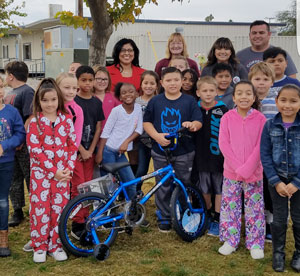
"To tell you the truth, we didn't believe we would get the grant," recalled Anaya. "I guess because it was our first attempt and we were going in somewhat blind. We knew what we wanted to do, but we figured we weren't going to be that lucky."
It was more than luck that landed them the grant. Palo Verde's rural location, high diabetes rate, and promising application made them competitive contenders. With the Outreach Program funds, the Palo Verde Children's Outreach Program (PVCOP) was born as a youth wellness and diabetes prevention program. To date, nearly 2,000 students have access to diabetes screening, prevention resources, and healthcare education.
Tackling Health Issues with FORHP Funds
PVCOP was one of 60 programs that received up to $600,000 of Outreach Program funds over the course of three years (2015-2018). Since 1994, FORHP has awarded the grant to hundreds of projects that have improved healthcare access and delivery for two million rural residents.
This invaluable program gives community members the chance to identify and determine the best approach to tackle health concerns specific to their community.
"This invaluable program gives community members the chance to identify and determine the best approach to tackle health concerns specific to their community," said Meriam Mikre, FORHP Program Coordinator and Project Officer of the Outreach Program.
As the project officer, Mikre's role is to connect awardees to tools and resources that support sustainable and effective programs. "I believe that the Outreach Program awardees have made immeasurable strides in their communities, generating changes that will have lasting effects on health status and improvement." From her experience, Mikre observed that successful Outreach Program projects were effective in the following areas: utilizing aspects of successfully established programs, building strong and meaningful partnerships, and interweaving sustainable strategies throughout their project.
Adapting a Proven Program to Reach Their Audience
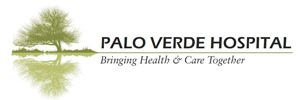 To avoid reinventing the wheel, awardees have the
option of modeling their program after an established
evidence-based or promising practice model and adapting
it to work in their own communities. To more effectively
reach Spanish-speaking students, PVCOP sought out a
bilingual, evidence-based curriculum. They found that the
Bienestar/NEEMA Health
Program had a track record of helping students and
families adopt healthier lifestyles. The curriculum's
lessons include fitness, nutrition, and general health
principles to prevent chronic diseases and obesity.
To avoid reinventing the wheel, awardees have the
option of modeling their program after an established
evidence-based or promising practice model and adapting
it to work in their own communities. To more effectively
reach Spanish-speaking students, PVCOP sought out a
bilingual, evidence-based curriculum. They found that the
Bienestar/NEEMA Health
Program had a track record of helping students and
families adopt healthier lifestyles. The curriculum's
lessons include fitness, nutrition, and general health
principles to prevent chronic diseases and obesity.
At the beginning of the year, the PVCOP team meets with participating schools' staff, nutritionists, and administration. Teachers are equipped with materials to lead Bienestar courses in their classrooms, while PVCOP instructors meet one-on-one with diabetic and high-risk students.
During the first year of the program, PVCOP discovered that as students got older, their Body Mass Index (BMI) increased. The team deduced that a key contributor was cultural cooking practices that use large amounts of fat and sugar in their dishes. The PVCOP team started making home visits to teach parents nutritional tips, like how to read food labels and plan healthy meals, so that the lessons being taught at school are reinforced at home.
What excites me is that we are out in the community and actively trying to work on wellness and prevention. This program has allowed us to go outside the walls of the hospital.
Beyond home visits, health fairs and community health education efforts have widened PVCOP's impact. "What excites me is that we are out in the community and actively trying to work on wellness and prevention," said Anaya. "This program has allowed us to go outside the walls of the hospital."
Partners Help Address the Greatest Needs
The Outreach Program also emphasizes the importance for awardees to be in touch with the needs of their communities and involve them in each stage of their project. "The process is really driven by the community," stated Mikre. "Because of this, dynamic partnerships and aligned objectives with like-minded organizations are essential for success."
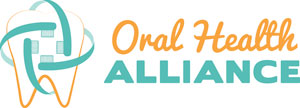 In Missouri, the Oral Health Alliance, a project of
the Northeast Missouri
Health Council, did just that. They were well aware
that oral health decline in the elderly population was a
statewide issue, but the scope of the problem at the
local level was still surprising. "I don't think we
recognized how bad [oral health] was until we got into
the nursing homes," explained Mandy Herleth, director of
quality improvement and grant operations for the Council.
A previous Outreach Program awardee, the Council
dedicated their most recent grant funds toward the
enhancement of dental services for senior
citizens.
In Missouri, the Oral Health Alliance, a project of
the Northeast Missouri
Health Council, did just that. They were well aware
that oral health decline in the elderly population was a
statewide issue, but the scope of the problem at the
local level was still surprising. "I don't think we
recognized how bad [oral health] was until we got into
the nursing homes," explained Mandy Herleth, director of
quality improvement and grant operations for the Council.
A previous Outreach Program awardee, the Council
dedicated their most recent grant funds toward the
enhancement of dental services for senior
citizens.
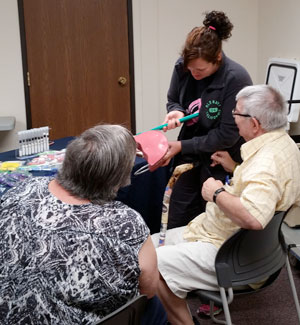
They reached out to partners who could bring a variety of skills to the table. Dentists, hygienists, and county health departments from the Alliance's 9-county service area signed up to provide dental screenings and oral healthcare at long-term care facilities and senior centers. The Northeast Missouri Area Agency on Aging began referring patients and linking the Oral Health Alliance to other agency partners.
According to Herleth, the necessity for partnership is greatest in rural communities because all parties are vying for the same audience. "In small communities, if you don't have partnerships, you are really just going to be spinning your wheels," she said. "Our rural partners are the ones that work with the populations and understand them a little bit more than we do," she said.
Another way the Alliance enhances dental care is by educating caregivers. The Alliance's "how-to" guide and supporting videos are used during staff orientation. Teaching tips include brushing and denture care techniques as well as recognizing cavities and mouth sores. Herleth believes that equipping staff with the tools to first help themselves will also inspire them to provide better care to residents. "I think that in helping staff, you help the residents," she said.
Enhancing Access to Care under One Roof
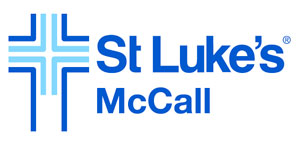 A
central focus of the Outreach Program is to enhance
healthcare access and delivery. The
St. Luke's McCall Medical Center Rural Outpatient
Care Coordination Collaborative (ROCCC) saw the potential
impact the grant funds could have on the Critical Access
Hospital's behavioral health integration efforts.
A
central focus of the Outreach Program is to enhance
healthcare access and delivery. The
St. Luke's McCall Medical Center Rural Outpatient
Care Coordination Collaborative (ROCCC) saw the potential
impact the grant funds could have on the Critical Access
Hospital's behavioral health integration efforts.
Don McKenzie, practice manager of St. Luke's McCall clinics, led the ROCCC team in creating a Patient-Centered Medical Home (PCMH) within the McCall health system. The model acts as a health neighborhood, providing multiple services under one roof, including coordinated care, medication assistance, mental health counseling, chronic disease management, transportation to appointments, and referrals to outside social services. With the Outreach Program grant funds, the PCMH model has made it easy for patients, especially those from surrounding rural areas, to get all of their needs met in one trip.
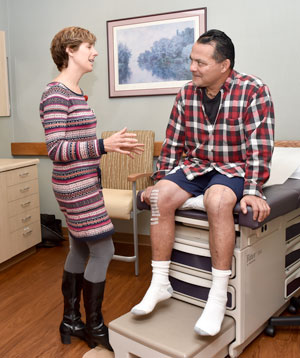
Since implementing the PCMH structure, the behavioral health follow-through rate has tripled. McKenzie attributes this to the fact that a patient's purpose for their visit can stay ambiguous. "We've made it easier for patients to get what they need without having to make an appointment and face that stigma outside the clinic. That's why it's such a critical piece to have behavioral health on site," stated McKenzie.
McKenzie is an advocate of the PCMH for rural healthcare facilities because it increases the number of options a patient has during their visit. In an urban setting, patients can easily switch facilities if they have a problem. "But patients often don't have those options in a rural clinic, so you are actually held to a higher standard by your own community," McKenzie explained. "That's why this PCMH model works so well in a rural community."
Working Ahead to Build Sustainability
Another trait of these Outreach Program awardees is their ability to create a model that can carry on after the grant cycle ends. "Successful programs also plan and work early on to incorporate sustainability into their models by thinking about how their programs will continue once the grant funding ends," said Mikre. She works with the Outreach Program's technical assistance provider, the Georgia Health Policy Center, to supply tools and methods for awardees. Together, they help projects create a sustainable framework that will continue once the grant funds end.
The Oral Health Alliance has managed to create sustained change through education. More than 550 staff and 850 senior citizens have received oral health education. Dentists in the 9-county region are seeing an increase in their patient population from long-term care facility referrals. For their final year of funding, the Alliance aims to implement oral health assessments for new residents in at least half of their service area's 21 long-term care facilities. With strong partnerships and backing from long-term care facility administration, Herleth has high hopes for a continued focus on oral health, even after the FORHP funding ends.
At St. Luke's McCall, the number of patients utilizing their Patient-Centered Medical Home services has grown rapidly. The emergency department's high utilizer admission rates are decreasing, and patient access to care through St. Luke's McCall clinics has increased by 15%. Their PCMH has been recognized by the state as a Tier 3 model – the optimal level for a medical home. Happy with the model's success, the McCall Memorial Hospital District board designated funds generated from a tax levy to continue it, a move toward sustainability. "This is the kind of program that people really believe in," said McKenzie.
We want the community to associate the hospital with health and wellness. I think we've started moving in that direction.
The Palo Verde Children's Outreach Program has reached the majority of students in the school and more than 17,000 people in the greater community with health and diabetes prevention education efforts. Because of PVCOP's success with students and families, Palo Verde Hospital has begun implementing related practices to sustain PVCOP's efforts. Since those with diabetes are at a greater risk for depression, every diabetic who comes into the clinic or emergency room is screened for depression. The Palo Verde Hospital collaborated with Blythe's transit agency to transport patients to their endocrinologist appointments in Coachella Valley via the town's new "Blythe Wellness Express." Anaya is encouraged by their progress. "We want the community to associate the hospital with health and wellness. I think we've started moving in that direction."
Video Extra: Outreach Projects Making a Difference
Below are additional 2015-2018 Outreach Program awardees who are making a notable difference in their rural communities. These videos and more can be viewed on the HRSA YouTube Rural Health Playlist Channel:
- Butler Healthcare Providers in Pennsylvania increased access to care for diabetic patients in their rural service area.
- The Stephenson and Carroll County Health Living Project in Illinois addresses obesity and chronic disease among adults through a multi-stage process. Read more about their work in RHIhub's Rural Health Models and Innovations.
- Bay Rivers Telehealth Alliance of Virginia is improving access to care and reducing hospital readmission rates using telehealth.
- St. Mary's Health Wagon, a mobile clinic, visits rural communities in southwest Virginia to provide free healthcare to those in need.
Find more examples on RHIhub of how FORHP's Outreach Program funds are being used:
